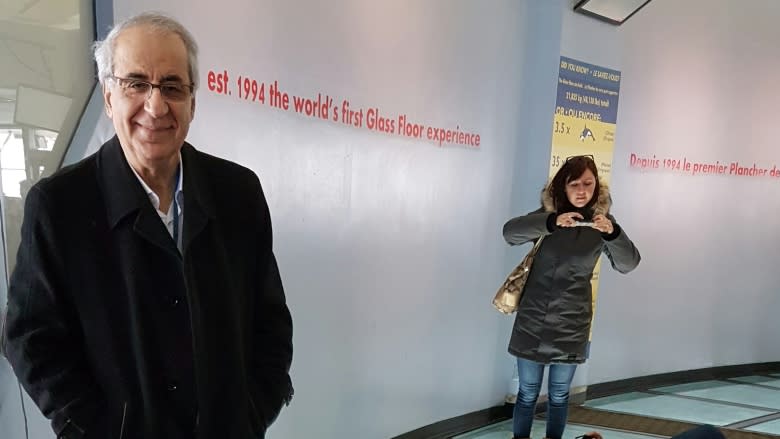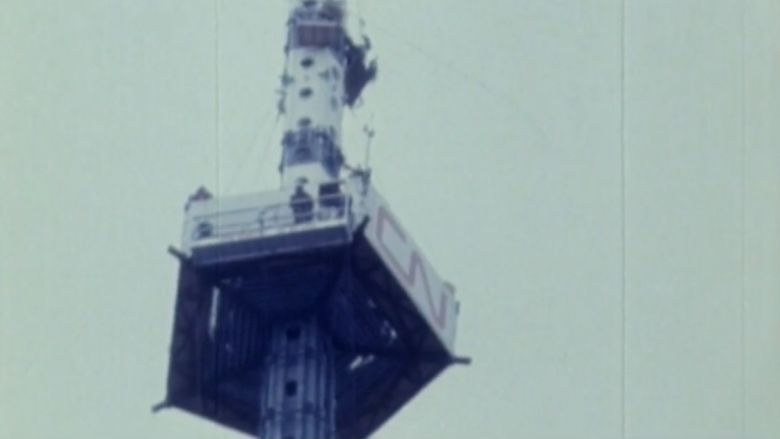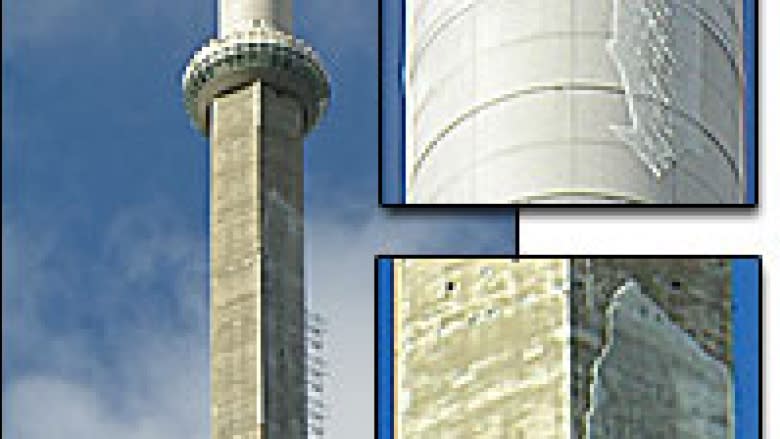Here's what the CN Tower was intended for, before the glass floor and EdgeWalk
The CN Tower sits nestled among dozens of highrises, but defines Toronto's skyline.
Although the tower is now one of the city's major tourist attractions — boasting a gravity-defying glass floor, a thrill-seeker's dream on the EdgeWalk and gourmet cuisine in a revolving restaurant — the tower which once held the world's tallest free-standing structure title had practical beginnings.
"The main purpose of the CN Tower is a telecommunication tower," said Jamil Mardukhi, a principal at NCK Engineering.
"Now it's both telecommunications and tourism, but it still plays a major role in telecommunications services in downtown Toronto."
Back in 1973, Mardukhi was given the job of supervising construction crews on the tower's site, and nearly 45 years later he's still involved as the tower's lead structural engineer.
Mardukhi explains that TV stations, FM and AM stations, and cell services use the tower for transmission, with many of those antennas located in the upper hundred metres of the tower — the part that is painted red and white.
Although transmission services now make up less than one per cent of the CN Tower's revenue, according to the tower's chief operating officer, Neil Jones, those services did play a pivotal role in the city.
The CN Tower helped solve communication problems during the construction boom of the 1960s where lowrise buildings were replaced with skyscrapers, according to its website. Older transmission towers just weren't high enough to broadcast over new buildings.
That antenna measures 102 metres, consists of 44 pieces — the heaviest of which weighs almost eight tonnes.
Despite a fire on Wednesday, Mardukhi says the CN tower antenna's biggest threat is lightning, but there is "enough lightning protection so that all the energy coming from lightning strikes is absorbed and taken down to the ground so it won't cause any damage."
He also reassured that because of the way the tower is built, it would not be able to burn to the ground.
He described the fire as a minor one, but said there have been communication tower fires that have knocked out signals for days — citing Moscow's Ostankino tower fire in 2000, which killed four people and affected television and radio signals around the city.
Mardukhi was called at 6:30 a.m. about the fire, but by the time he arrived at the scene he was told the fire was mostly out.
"The next stage obviously is we have to go up and inspect and see if there's any damage to the structure and the services it provides," he said.
Near disaster during CN Tower construction
This week's fire isn't the first time the CN Tower has experienced a scary situation, and there was also a tense incident during the final phase of the tower's construction.
The antenna was the last thing added to the CN Tower in February 1974. According to the CN Tower's website, before it could be lifted into place, the giant crane used to build the tower would have to be dismantled and brought down.
The work needed to be done in the middle of winter, on an area only 1.5 metres in diameter, all while battling gusty winds.
So "Olga," a Sikorsky helicopter used for industrial lifting, was hired.
But as the helicopter removed the first part, "the crane lurched, twisted and seized supporting bolts."
The helicopter became attached to the tower, with only 50 minutes of fuel. The crane couldn't simply be detached, as the operator was still inside. Eventually, workers managed to release the crane from the tower before the helicopter ran out of fuel.
The final part of the antenna was installed in April 1975, which officially made the CN Tower the tallest tower in the western hemisphere.







